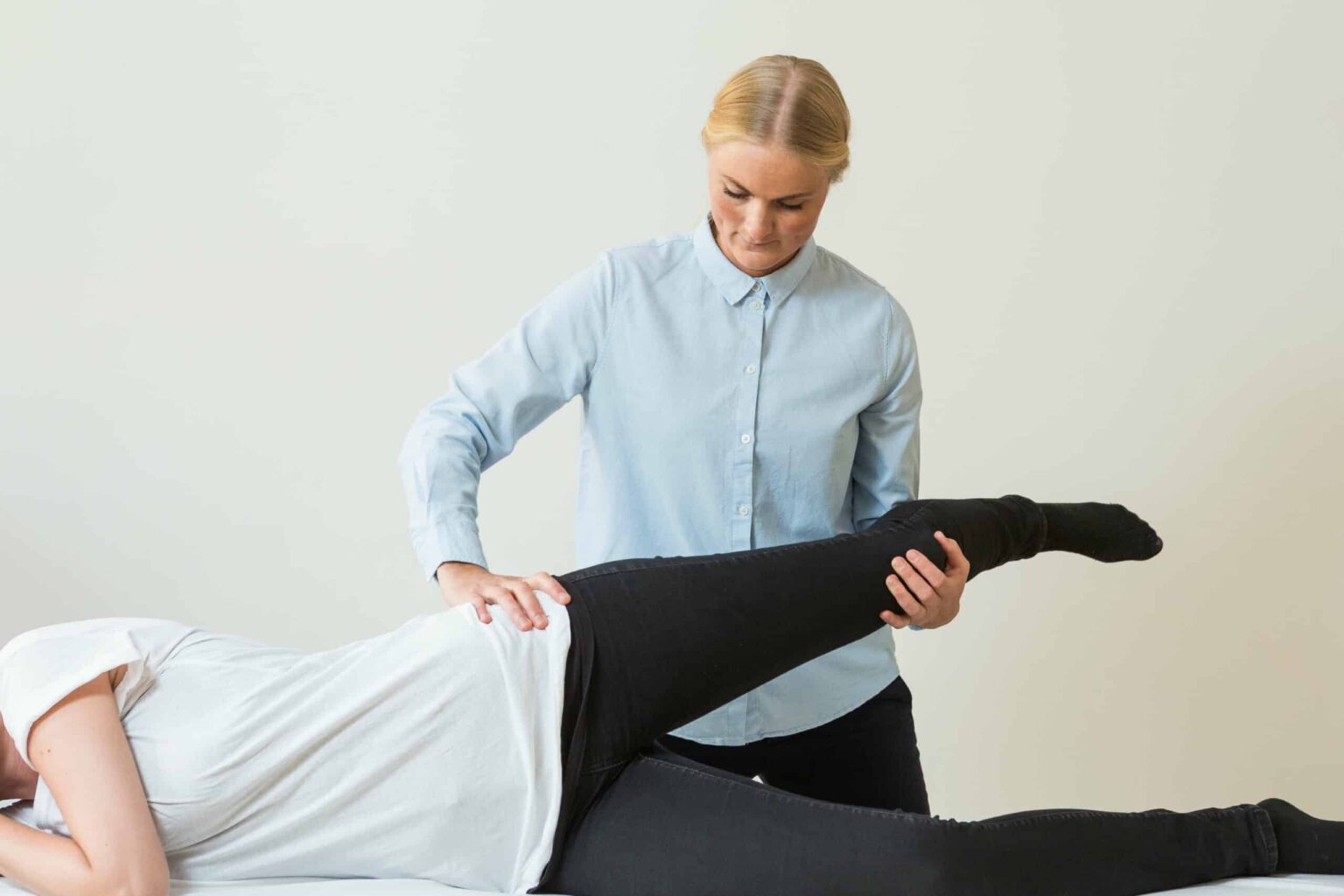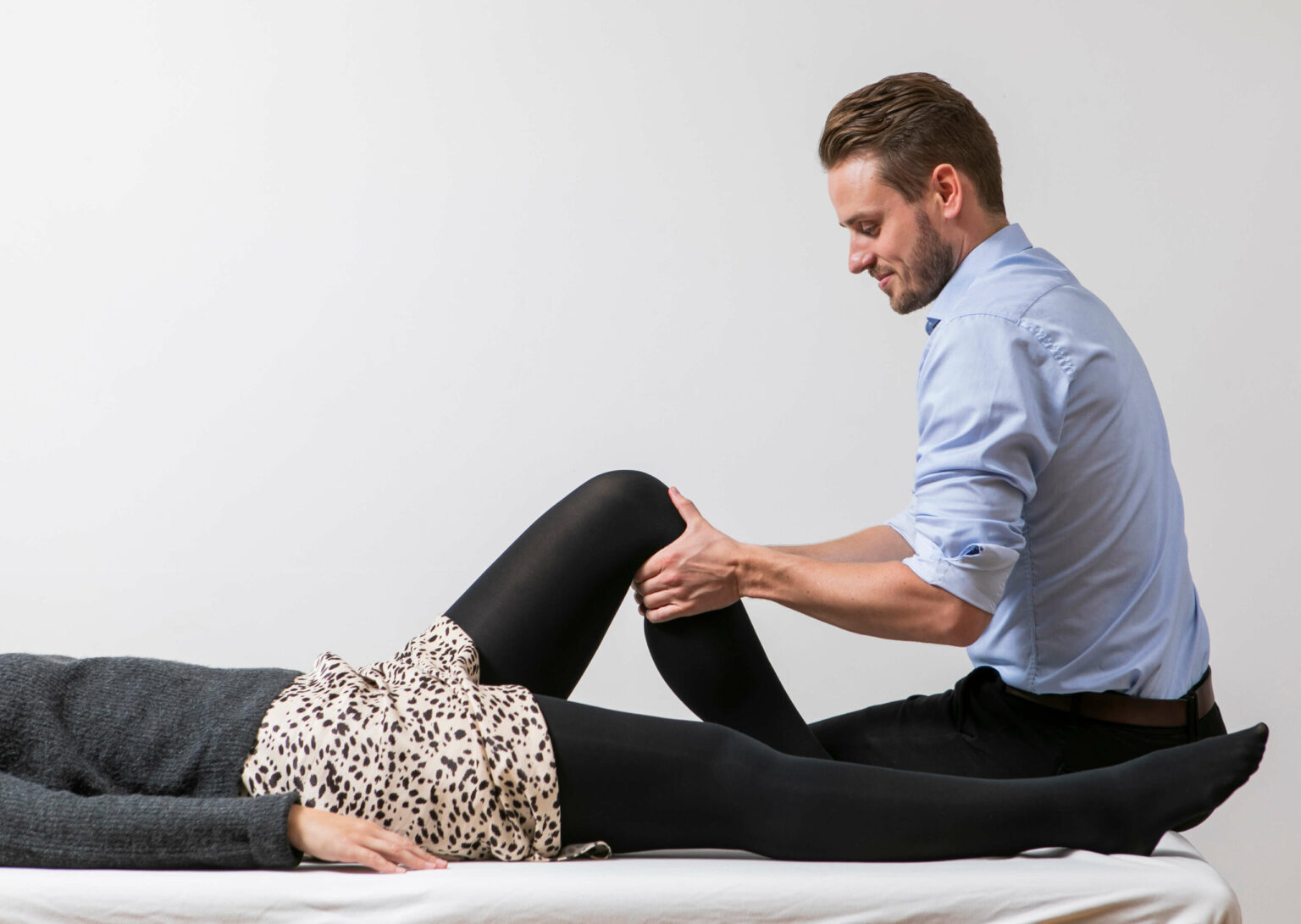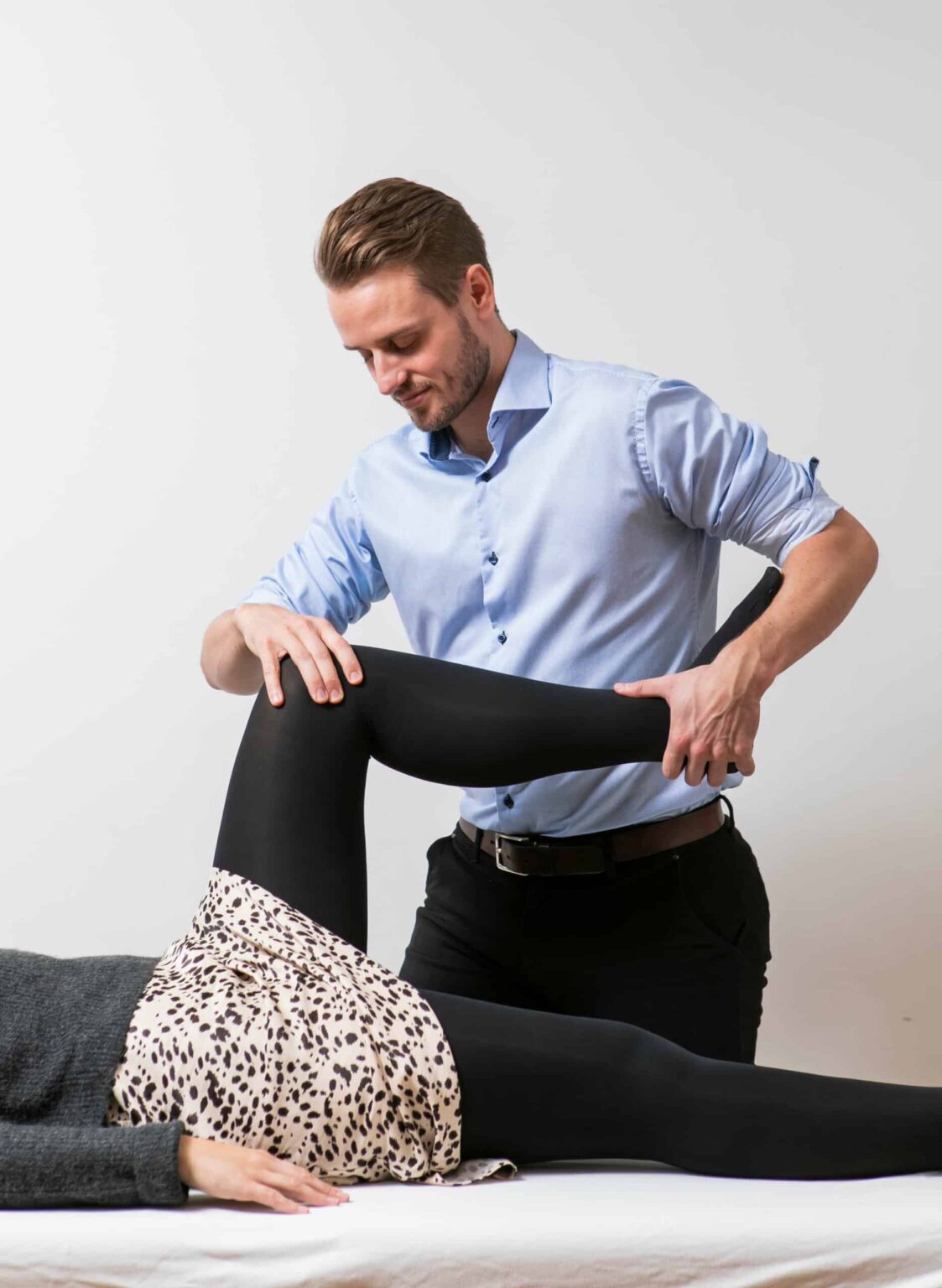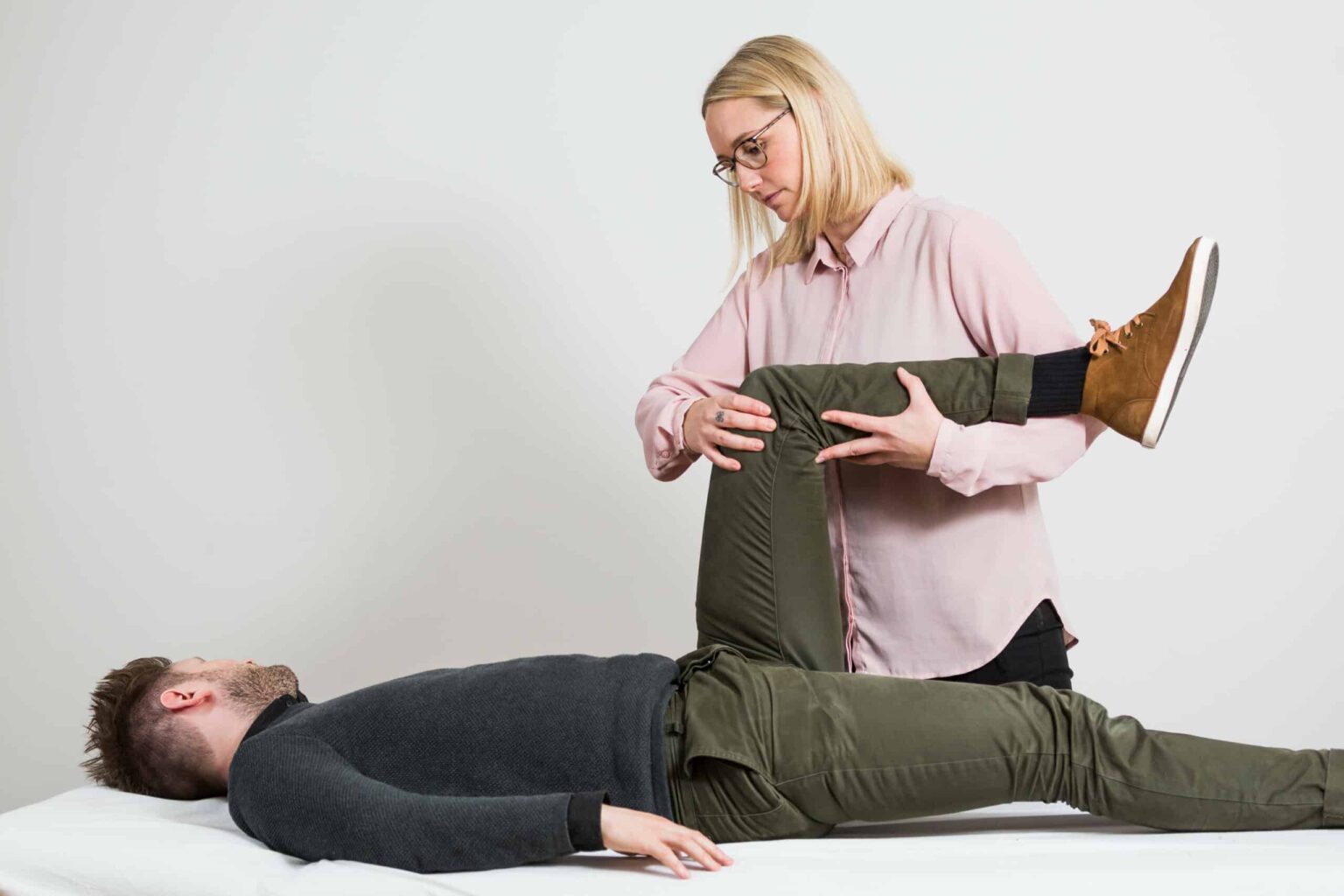We treat
Baker's Cyst
Learn more about Baker's cyst and the problems it can cause.
What is Baker’s cyst?
A Baker cyst is a fluid-filled growth (cyst) behind the knee.
Many cysts are small and are discovered by chance, where other cysts swell up more and tighten quite a bit. Cysts can cause pain in the back of the knee and in some cases in the calf muscle. In rare cases, the cyst can rupture, which will cause sudden severe pain in the lower leg.
Baker’s cyst will typically develop if there is already another disease or injury in the knee.
Jump to section [Vis]
Why do you get Baker’s cyst?
In adults, the cause of a Baker’s cyst is most often an irritation of the lining of the knee. Baker’s cyst is typically associated with various conditions in the knee joint such as rheumatoid arthritis, osteoarthritis, and meniscus injuries.
How does a Baker’s cyst occur?
The reason why the cyst occurs is because the synovial fluid that is normally found in the knee joint itself is squeezed out into the joint capsule itself, thereby creating the cyst.
Symptoms of Baker’s cyst
- Pressure and tenderness behind the knee, soft area
- Tenderness throughout the knee
- Stiffness and reduced ability to bend the knee fully
- Pain and swelling when walking and running
- Sensory disturbance around the shin and foot
Causes of Baker’s cyst
The reason is most often that there is another pathology in the knee already, which develops a Baker’s cyst. The cyst is most often connected to the knee joint via a small opening, and thus it can change size depending on how the fluid pressure is in the joint itself. In some cases, the small opening is pinched, which means that the cyst does not disappear even though the disease/injury in the knee is healed and stable.

Baker’s cyst and swollen legs
In some cases, a Baker’s cyst can resemble a venous blood clot in the leg, but the difference is that the cyst itself is not dangerous. If the cyst presses on the vein and artery that runs along the back of the knee, the leg can swell and become tender. In some cases, where it can be difficult to distinguish whether it is one cause or another, you will most often be referred to your doctor and examined at the hospital.
Rupture of Baker’s cyst
When the cyst ruptures, fluid seeps down between the calf muscles, which develops into an irritation in the area. The calf feels red and sore, and stretching the ankle causes a pain response in the calf.
Treatment of Baker’s cyst
First, the area is relieved to see if the condition goes away on its own. In some cases, it may be helpful to use a knee brace to support the knee and help the swelling to decrease. This is often combined with exercises to improve the efficiency of the venous pump system.
Soft tissue therapy around the knee can also help loosen the muscles. If treatment is ineffective, the fluid will typically be drained and an adrenal corticosteroid injection will be given.
If the underlying cause, which is typically a disease/injury to the knee, has been treated, and the cyst is still bothersome, you may need to have laparoscopic surgery to remove the cyst.

Osteopathic treatment of Baker’s cyst
With the osteopathic approach, we can specify what is causing the cyst to remain irritated and tender.
It is important to focus on the entire body, as the cause is often found somewhere other than the knee.
For example, it may be due to the fascia around the organs being tight and thereby pinching around the groin where a vein, artery and nerve pass, which continue down the back of the knee. It may also be due to a lack of quality in the biomechanics, i.e. how well the joints and muscles move in relation to each other.
If there is a restriction in how the diaphragm moves, it also affects the body’s ability to pump blood and fluid around the body via the venous and arterial system, which will mean the knee will continue to be swollen.
To remedy a cyst, we first need to find out why it has arisen, and then examine all the systems that may be inhibited so that the body has better conditions to heal itself.
Good advice for Baker’s cyst
- Avoid activities that cause more pain and swelling
- Relieve the knee
- Do venous pump exercises over the foot, knee and hip
- Cycling with light resistance
Exercises for Baker’s Cyst
- Place a rolled-up towel or blanket under the knee where the Baker’s cyst is – lift your toes towards you, lift your straight leg, lower your leg, and only when the heel hits the bottom surface do you let the ankle and foot relax.
- Lie on your back – pull your leg towards you and stretch slowly
- Lie on your stomach – bend your leg and stretch it slowly
- Lie on your back with your legs at 90 degrees and your feet on the wall – stretch and bend your knee
- Stand up straight and support yourself with a chair if necessary – bring your knee up towards the ceiling to approximately 90 degrees at the hip, and lower it again.

Often related injuries

Restless Legs Syndrome (RLS)

Cruciate ligament injuries – ACL/PCL

Synovial Plica

